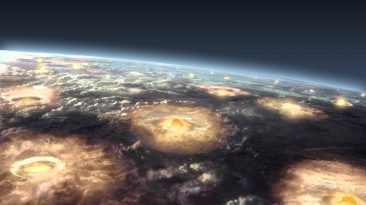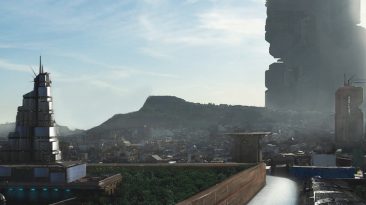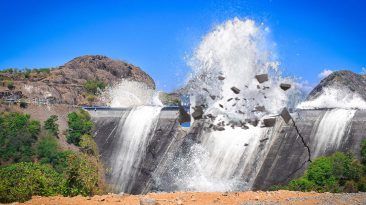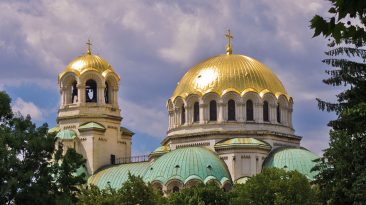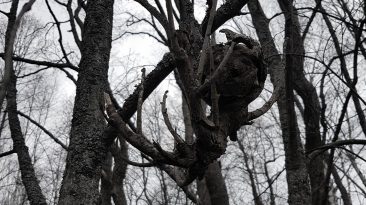The Amazon rainforest stretches for millions of kilometers, hiding ancient tribes, animals and maybe something else. What if under this mysterious canopy lies an advanced civilization? How did we miss something so huge? Is the rainforest just an overgrown garden? And why didn’t these people fight off the European conquest?
In the 1500s, Spanish explorer Francisco de Orellana returned from the Amazon with wild tales of a golden city called El Dorado and warrior women in the jungle. But when others searched for treasure and glory, they all came back with nothing. So what the heck? Did de Orellana make it all up? Well, for the next few centuries, that’s what we thought.
But now, thanks to technology, it looks like this explorer wasn’t lying. Using sophisticated aerial sensors, researchers created a 3D image of the ground under the rainforest revealing a hidden ancient city. That flies in the face of everything we thought we knew about the Amazon. But what if these people still lived among us?
The Amazon is the size of India, and much of it lies beyond our reach. Without this technology, we might have never seen what lies beneath the ground. So what else did we learn? Humans flourished in the Amazon Basin for almost 10,000 years. And they weren’t living in the tiny mud huts like you may have seen in movies.
These sprawling cities could’ve held nearly one million people in their prime. And if these complex, sophisticated people lived today, the history of the world would be radically different. The Amazon belonged to the Casarabe people. And they didn’t just adapt to the jungle. They might have created it. That’s the theory anyway.
Researchers think this society built garden cities around the plant life they selected. Throughout the area, the Brazil nut tree dominates the land. Is that a coincidence, or is this how the Casarabe fed their people? Still not convinced? Well, the soil found in the Amazon contains nutrients not found anywhere else on Earth.
Called terra preta, this dirt contains microbes that fertilize barren land. But while we think humans created this, we still don’t know exactly how. So what do we know? Those images showed us they built villages in geometric patterns. They clustered small communities around larger ones. Roads connected these settlements, and they even constructed waterways.
Waterways that could’ve controlled seasonal floodings to grow crops and farm fish. These intricate Amazon cities are older than anything the ancient Greeks built. But what else did researchers find? For one, it looks like these lost cities aligned with the stars. This means these builders had advanced knowledge of astronomy.
The Casarabe built a civilization that rivaled anything on Earth at the time. So what happened to them? Well, we still don’t know. But remember, these people depended on flood waters for almost everything. If water became scarce during a drought, much of their civilization could’ve died out. Whatever happened, they were gone for 100 years before the Spanish arrived.
Just enough time for the jungle to reclaim their once-great society. But if the Casarabe survived, they could’ve grown even more advanced, learning more about math, science and astronomy. They might have even fought off the European conquest of South America. Masters of the land, these experienced jungle warriors could have created alliances with other cultures, like the Aztecs or Incas.
This army might have changed the face of history as we know it. And if the invaders and the Casarabe called a truce, maybe the two societies could have traded knowledge. The people of the Amazon could’ve integrated European transportation methods and weaponry into their everyday lives. While diseases like smallpox would’ve still been devastating, they might have developed medicines or immunity to fight it off.
More importantly, all the minerals and precious materials hidden in South America would have remained in South America. Spanish wouldn’t be the third most spoken language on the planet because these citizens would proudly speak in their native tongue. The nations we know now could be completely different, united under an Amazonia culture.
Sources
- “‘Mind Blowing’ Ancient Settlements Uncovered In The Amazon”. Freda Kreier. 2022. nature.com.
- “Lidar Reveals Pre-Hispanic Low-Density Urbanism In The Bolivian Amazon”. Prümers, Heiko, Carla Jaimes Betancourt, José Iriarte, Mark Robinson, and Martin Schaich. 2022. Nature 606 (7913): 325-328. doi:10.1038/s41586-022-04780-4.
- “Satellite Images Aided the Discovery of an Ancient Civilization Buried in the Amazon”. Laignee Barron. 2018. time.com.
- “Pre-Columbian Earth-Builders Settled Along The Entire Southern Rim Of The Amazon”. Jonas Gregorio de Souza, Denise Pahl Schaan, Mark Robinson, Antonia Damasceno Barbosa, Luiz E. O. C. Aragão, Ben Hur Marimon Jr., Beatriz Schwantes Marimon, Izaias Brasil da Silva, Salman Saeed Khan, Francisco Ruji Nakahara & José Iriarte. 2018. Nature Communications 9 (1). doi:10.1038/s41467-018-03510-7.
- “New Discovery Shows Amazon Jungle Once Home To Many Millions”. Erin Blakemore. 2018. nationalgeographic.com.












